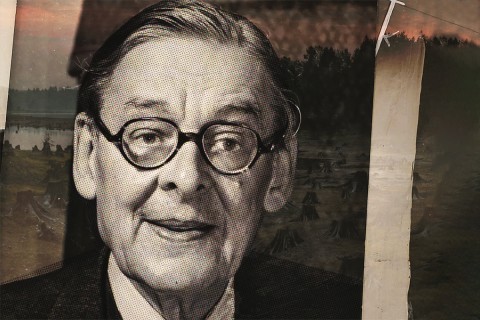Reading The Waste Land as it turns 100
T. S. Eliot’s epic poem is a masterpiece—but what do we do with its view of classical Western tradition?

In 2018, my sister and I visited the parish church of St. Michael and All Angels’ in the English village of East Coker, where poet T. S. Eliot is buried. Although born in the United States, Eliot lived in England for much of his life, and his burial in the Somerset hamlet, where his ancestors had once lived, was in keeping with the convictions of a man for whom tradition was eminently important.
Arriving at Eliot’s grave marked the end of a literary pilgrimage we had begun 20 years earlier. The plan was to visit each of the sites referenced in the titles of the poems in his Four Quartets. What began as frivolous literary tourism became over time a life motif. Tracking down Eliot sites felt like following a thread I’d picked up back when I was just beginning to explore the texts that had been formative for Eliot and his writing: the Greek and Roman classics, Augustine, Dante, Shakespeare.
Back then I had believed that my task as an academic, writer, and educator was to preserve and interpret messages from an older time as guidelines for navigating the shifting contemporary world. The point of preserving tradition was the preservation of humanity itself. “These fragments I have shored against my ruins,” Eliot wrote in The Waste Land.




